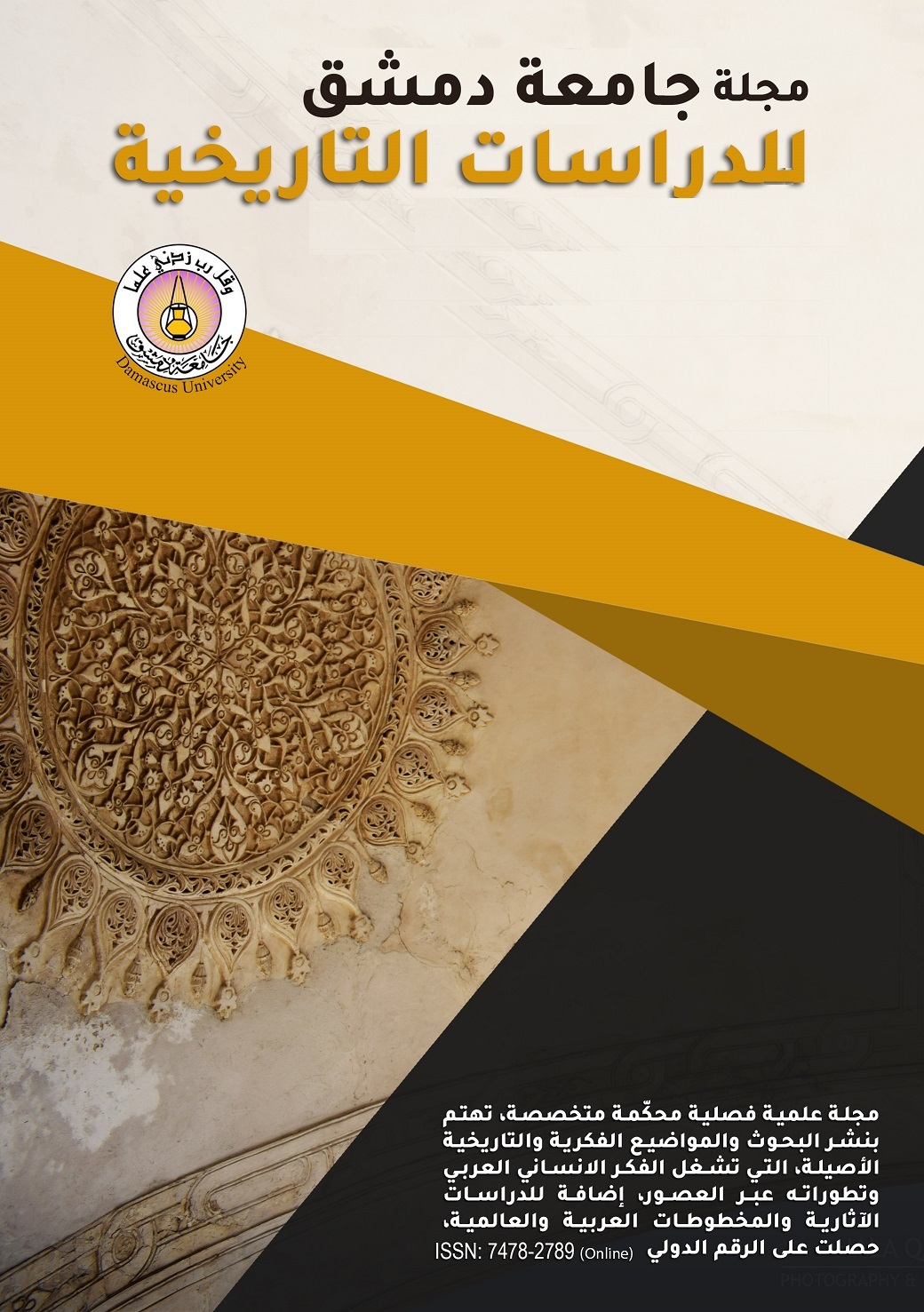الهيئة التعليمية في مدارس دمشق الشرعية في القرن الحادي عشر الهجري / السابع عشر الميلادي.
الكلمات المفتاحية:
المُدرّس، التنافس بين المُدرّسينالملخص
تُسلط هذه الدراسة الضوء على الهيئة التعليمية في مدارس دمشق الشرعية في القرن الحادي عشر الهجري / السابع عشر الميلادي، والتي كانت تضم المُؤدّب وهو المسؤول عن تعليم الأطفال في الكتاتيب، والمُعيد المُكّلف بإعادة الدروس في المدارس، ونائب المُدرّس وهو الذي ينوب عن المُدرّس في إلقاء الدرس في حال غياب المُدرّس. وإن أهم عضو في هذه الهيئة هو المُدرّس، والذي قُيد بمجموعة من الشروط والواجبات التي تحدّد طريقة عمله في المدرسة، وكان تعيين المُدرّسين في المدارس حصراً من قبل السلطات المعنية بالسلطنة العثمانية، وقد تنوعت الأساليب التي اتبعها المُدرّسون للوصول إلى الوظائف العلمية، ومن هذه الأساليب السفر إلى العاصمة للوساطة عند أولي الأمر، والفراغ والرشوة واستغلال العلاقات الشخصية. وكثيراً ما شهدت المدارس تنافساً كبيراً بين المُدرّسين للتدرّيس فيها. وتباينت أعمار المُدرّسين عند تعيينهم، كما تباينت رواتبهم. ولم يكتفِ أغلب المُدرسين بوظيفة علمية واحدة، بل شغلوا أكثر من وظيفة في آن واحد. هذا وقد وفرت العديد من المدارس السكن لطلابها، وخاصة الوافدين منهم. كما أكد البحث على أن مدارس دمشق بما حوته من منظومة تعليمية شكلت مع مراكز أخرى في السلطنة مركزاً قديماً للفقه الإسلامي.

